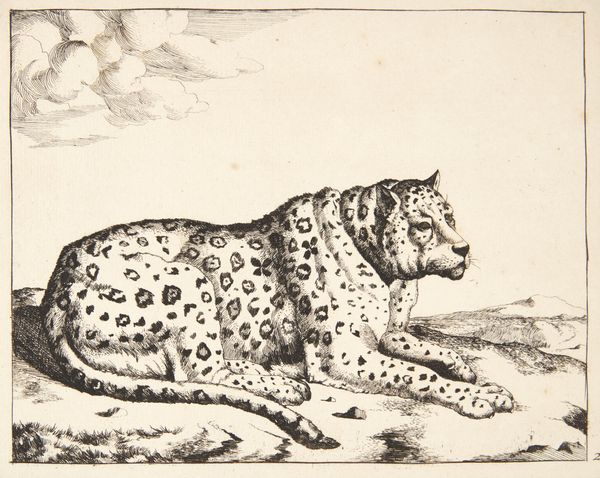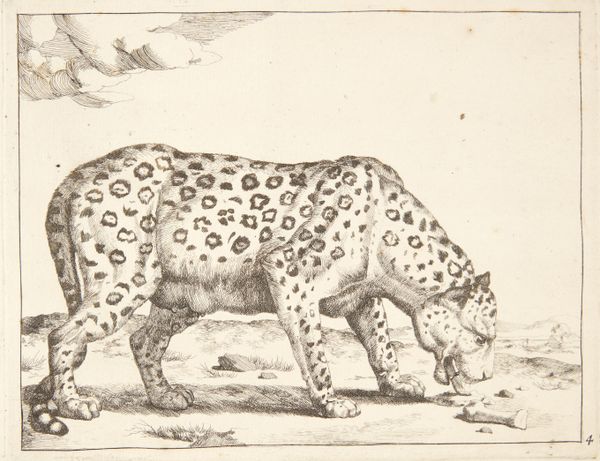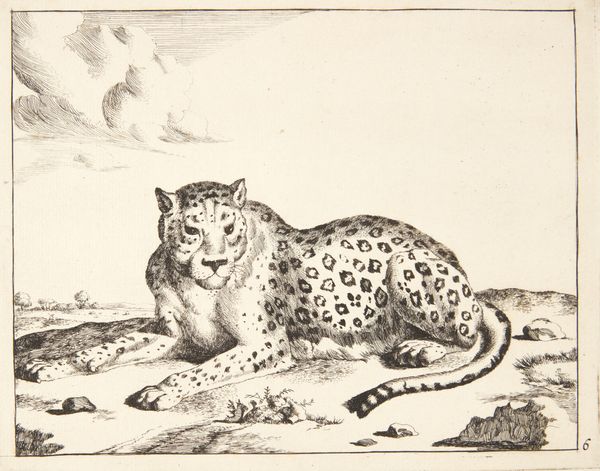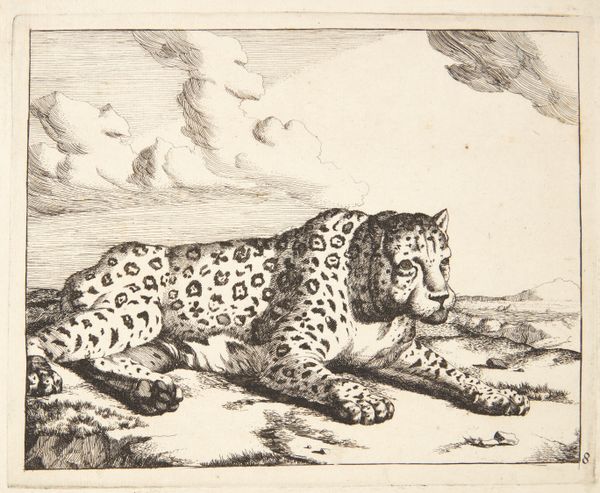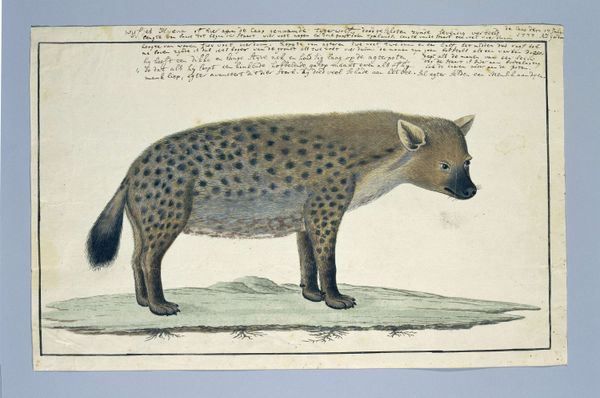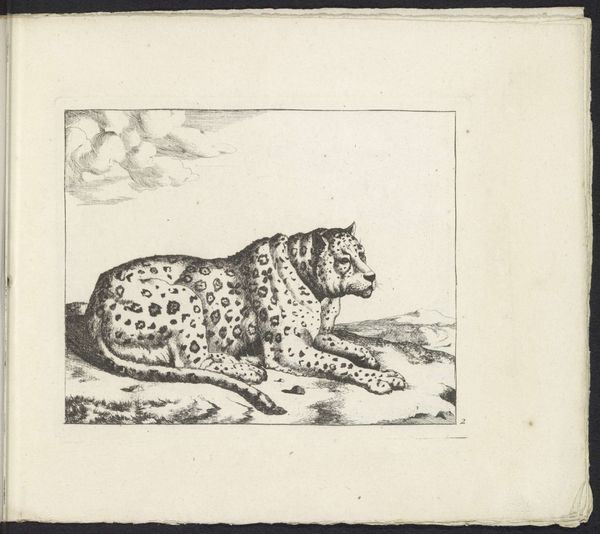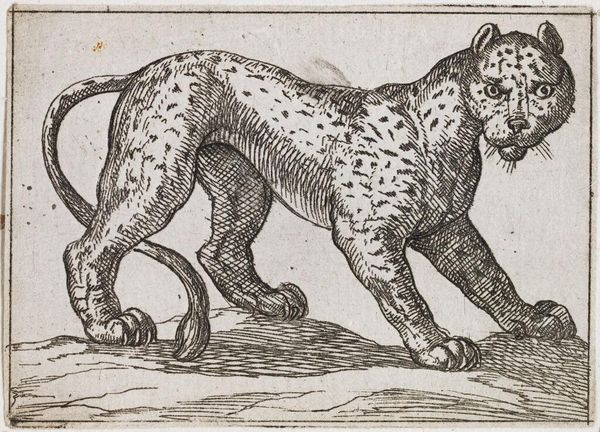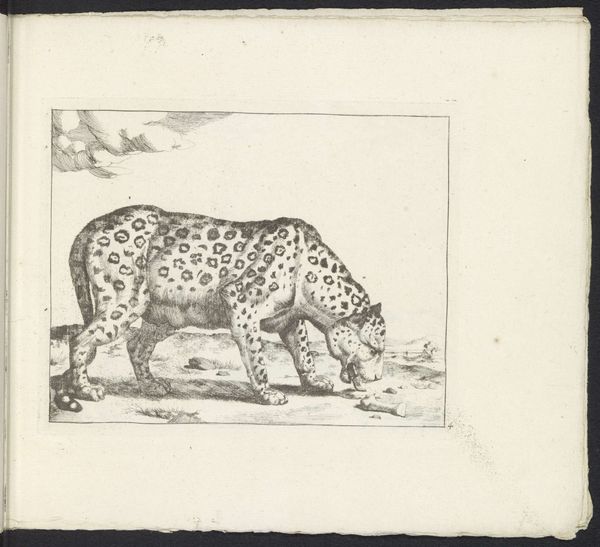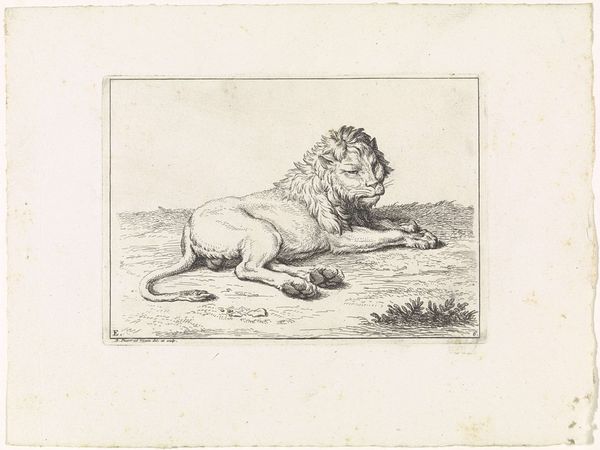
drawing, coloured-pencil, watercolor
#
drawing
#
coloured-pencil
#
animal
#
landscape
#
watercolor
#
coloured pencil
#
watercolour illustration
Dimensions: height 660 mm, width 480 mm, height 262 mm, width 422 mm, height 189 mm, width 350 mm
Copyright: Rijks Museum: Open Domain
Curator: Look at the attentive gaze of the cheetah in this piece entitled "Acinonyx jubatus," dating possibly from 1777 to 1786, by Robert Jacob Gordon. The work combines watercolor and coloured pencil, portraying the animal in a vast landscape setting. Editor: My first impression is how incredibly still the animal appears amidst that spacious scene. It's poised, almost as if holding its breath, giving a quiet, eerie, and unnatural feel to the piece, which otherwise looks rather idyllic. Curator: Indeed. It's the animal’s positioning and its formal representation against the backdrop that generates that effect. See how the artist's rendering focuses intensely on the precise rendering of the cheetah’s anatomy and coat pattern? These details are placed in direct contrast with the looser brushstrokes and broader washes used for the landscape itself. It almost renders the animal more… symbolic, than zoological. Editor: Precisely, and this very symbolic element is precisely what complicates it. Who was this work for, and what colonial agendas were being served when a European artist sought to capture African fauna with such detail? Was it scientific pursuit, or resource mapping in a broader context of imperial desire and dominion? It cannot be extracted from these issues. Curator: Your emphasis on its historical dimension is of course key to interpretation. I'm particularly struck by the textures, especially the contrast between the animal's fur, achieved through delicate pencil work, and the watercolor washes in the land—there's an exquisite sense of layered reality within the piece that speaks to observational acuity. Editor: I’m interested in how this perceived "acuity" could, and probably did, facilitate specific forms of exploitation of both natural resources and indigenous populations. We risk romanticizing these images, which aestheticize a power dynamic that was inherently destructive. The artist has produced more than a scientific observation, but an ideological framing of land and creature. Curator: Fair point, indeed. Reflecting on this beautiful but somewhat unsettling depiction, it serves to underscore how artistic endeavors, no matter their medium, can be imbued with intricate layers of design and history. Editor: Ultimately it pushes us to ask not just "what" is being represented but also "why," and more urgently, "for whom?". These are not mutually exclusive, nor are they merely historical.
Comments
No comments
Be the first to comment and join the conversation on the ultimate creative platform.

